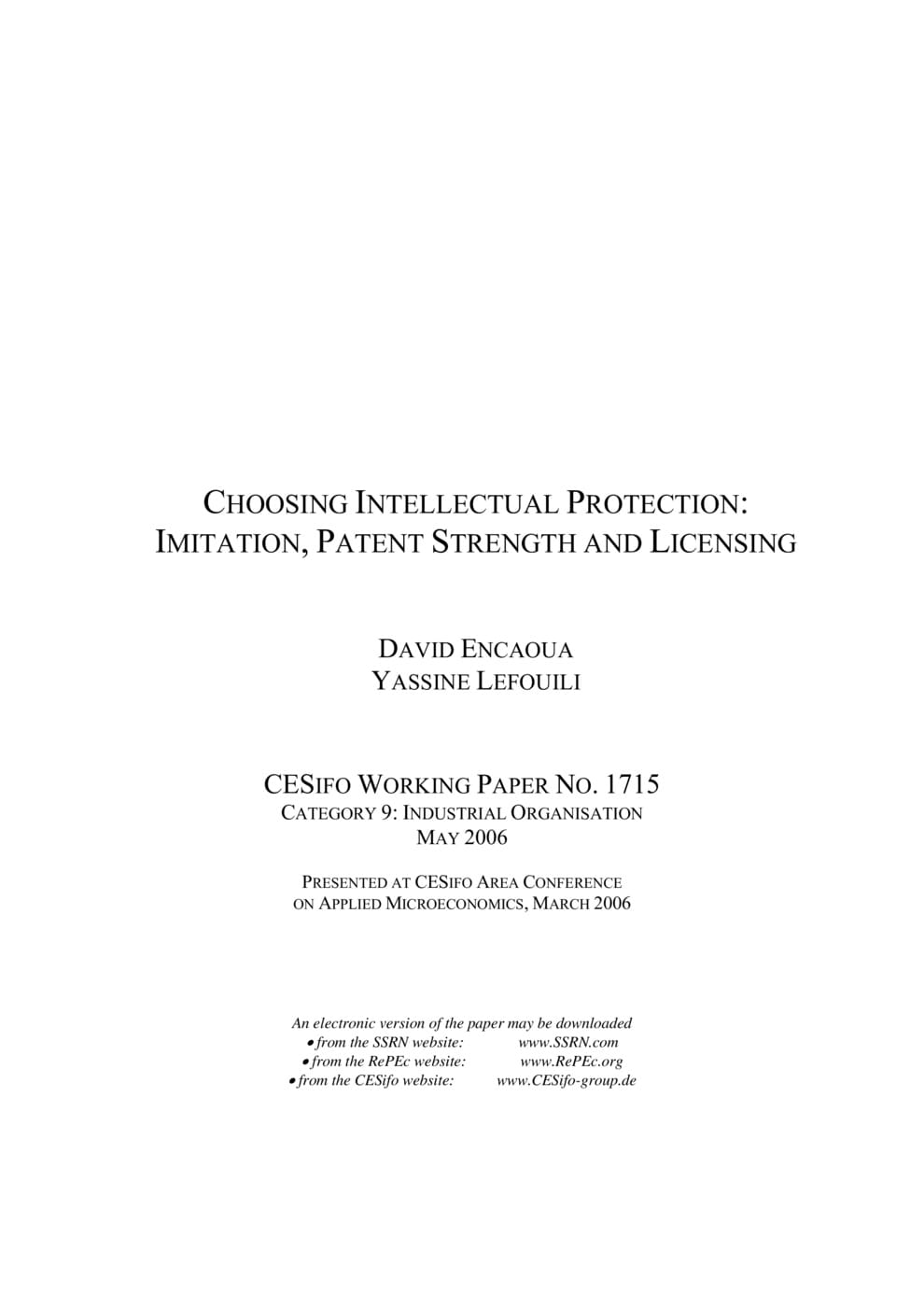Choosing Intellectual Protection: Imitation, Patent Strength and Licensing
CESifo, Munich, 2006
CESifo Working Paper No. 1715

This paper investigates the choice of an intellectual protection regime for a process innovation. We set up a multi-stage model in which choosing between patent and trade secrecy is affected by three parameters : the patent strength defined as the probability that the right is upheld by the court, the cost of imitating a patented innovation relative to the cost of imitating a secret innovation, and the innovation size defined as the extent of the cost reduction. The choice of the protection regime is the result of two effects: the damage effect evaluated under the unjust enrichment doctrine and the effect of market competition that occurs under the shadow of infringement. We find that large innovations are likely to be kept secret whereas small innovations are always patented. Furthermore, medium innovations are patented only when patent strength is sufficiently high. Finally, we investigate a class of licensing agreements used to settle patent disputes between patent holders and their competitors.